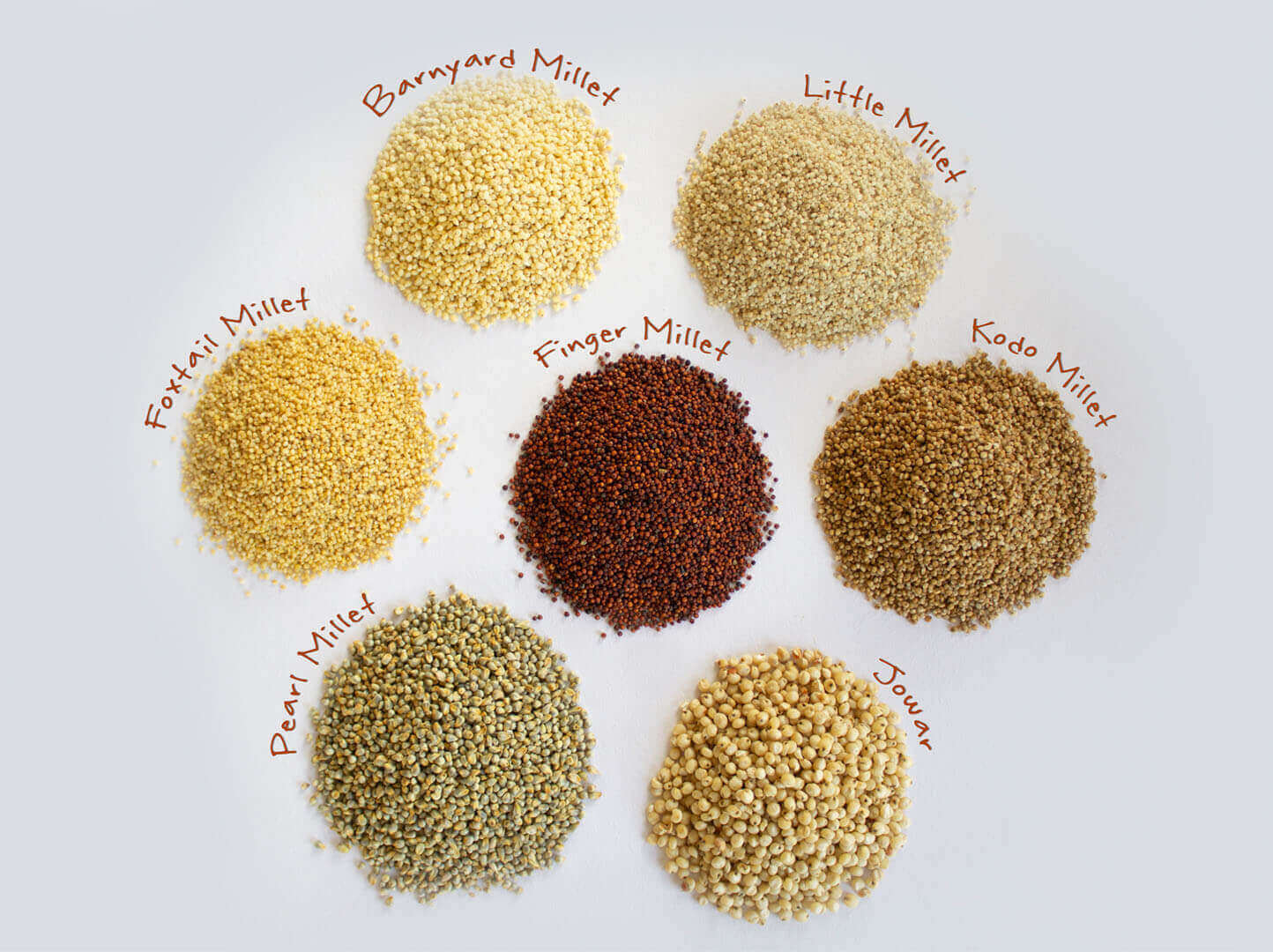One of the oldest foods known to mankind, millets were the first cereal grains that were consumed by human beings. Cultivated in East Asia as many as 10,000 years ago, this drought-resistant grain, in prehistoric times, was more widely eaten than even rice.
In modern times, millets are a bit of a wonder food. Their protein structure is quite similar to wheat, making them a great gluten free substitute for breads, baking, etc. Millets are also rich in iron, calcium, phosphorus and other minerals; thereby it’s imperative that we mix upour grain intake with some millets.

What are the types of millets?
For the sake of simplicity, we’ll cover millets that are grown in India. Let’s take a brief look at each.
- Pearl: India is the highest producer of pearl millet or Bajra. It’s super high in protein, fuels you up and is great for rotis. It’s also eaten sprouted and in porridges.
- Kodo: Known as Kodra or Kodon, Kodo millet is high in fibre and offers a great energy boost. It’s thus ideal for diabetics, and can be substituted for rice.
- Little millet: Has the highest fat content and is commonly consumed as bread, dosas, rotis and rice. It’s known as Kutki in hindi.
- Finger millet: Known as Mandua in Hindi and famous as Ragi in Karnataka, finger millet has the highest calcium content and is a staple food in Karnataka in the form of muddes.
- Foxtail: With the highest mineral content of all millets, foxtail millet is justifiably the second most produced in the world. It’s known as Kangni in Hindi.
- Barnyard: Barnyard millet grows faster than you can say Jhangora (its Hindi name). It also has the highest fibre and iron content amongst its fellow millets.
- Sorghum: Say hello to Jowar, the hardy grain that’s consumed all over India as rotis and porridges, thanks to its high protein + carb + energy composition.
- Proso Millet: Known as Barri or Chena in Hindi, Proso has the highest protein content, and unfortunately, is quite high in carbs as well. Of the millets, we’d recommend this only when you’re working out strenuously or trying to build muscle.
Health Benefits Of Millets
Millet is so important because of its uniquely high content of nutrients, including impressive starch levels, very high B-vitamin content, as well as calcium, iron, potassium, zinc, magnesium, not to mention being a healthy source of essential fats in the body.
What can I make with millets?
Everything. Anything. Just substitute them for grains and also come up with new ways of using them. Their higher nutritional value makes every dish that much more filling and better for you. From idlis, dosas and upma to khichdi, pulav /biriyani and kheer /payasam, millets are the most versatile ingredient
How do I use them?
Just like you’d use wheat flour or rice. You use millet flour to make rotis and breads or cook them like rice. Keep in mind that millets might take a little more water than the former.
Toasting millets before cooking enhances their nutty flavour, giving salads a nice edge.
You can also cook millets with more water to make porridge akin to polenta. If this mix is thick enough, you can also cool and cut into squares to fry or use as savoury snacks. However you’re cooking, remember to stir as much as possible.
Things to remember
Millets don’t keep too well overnight. So make just enough for the meal. And as with everything in life, moderation is key. Millets are best eaten alternating with wheat and rice, rather than solely.

